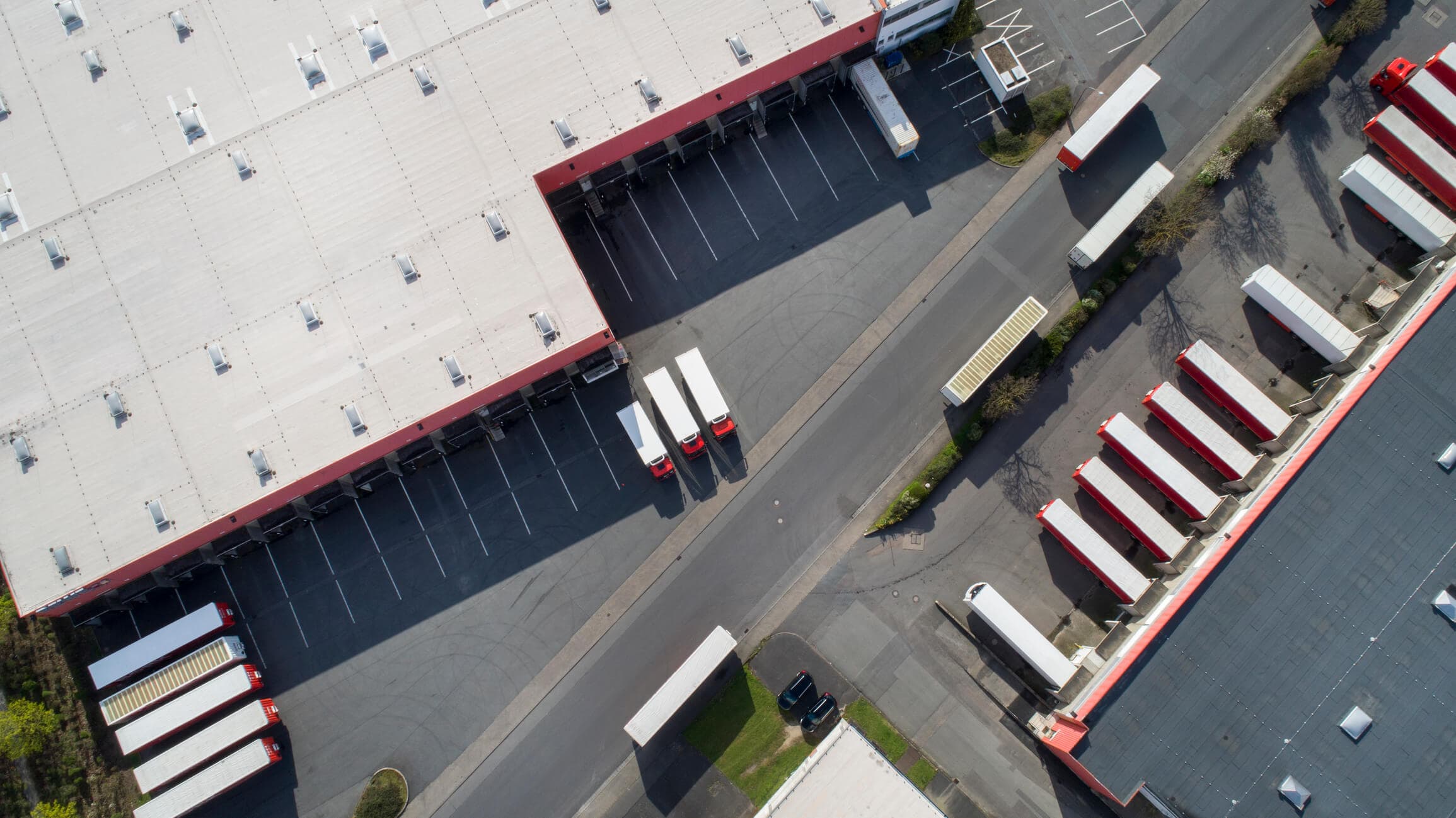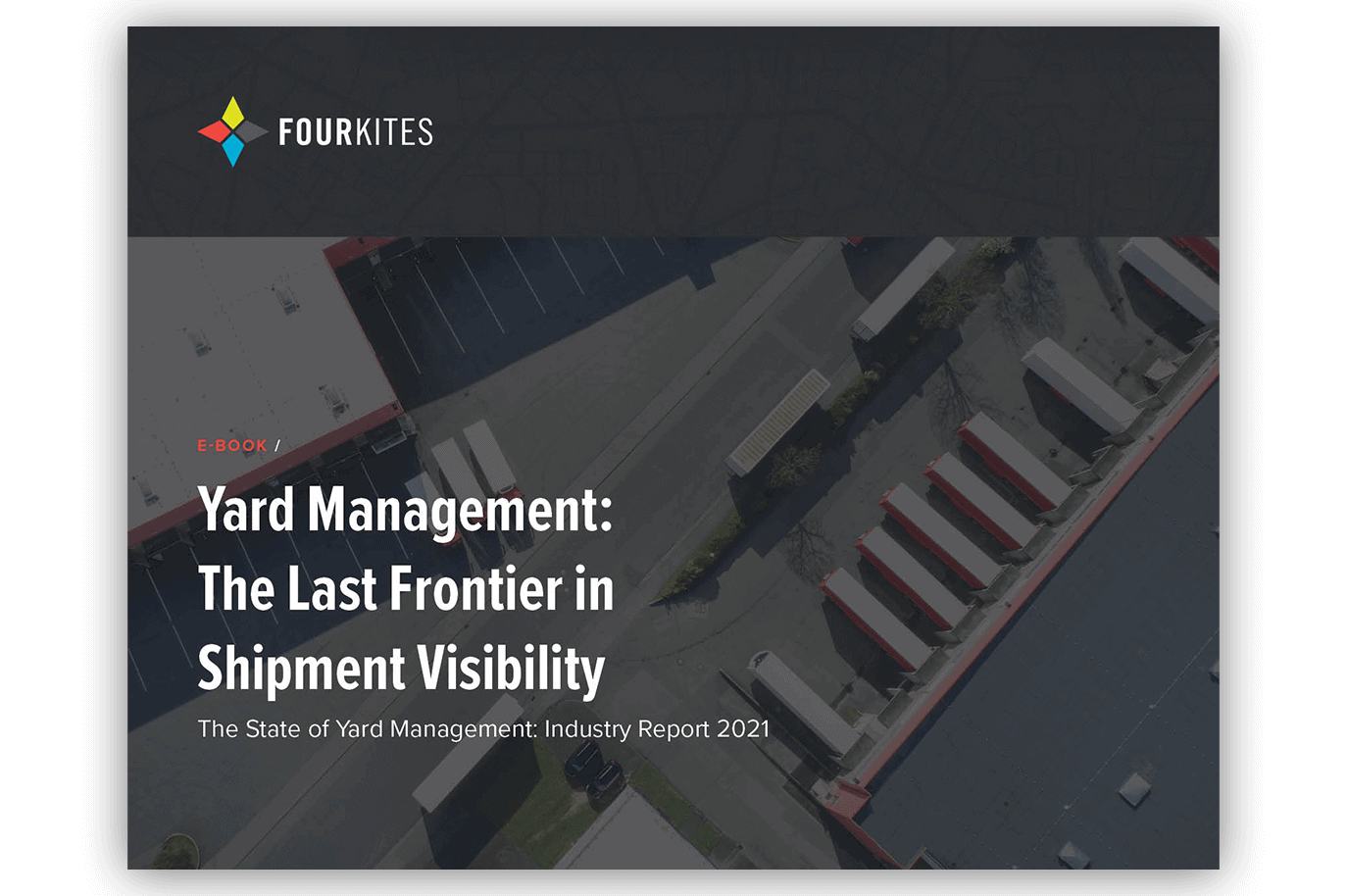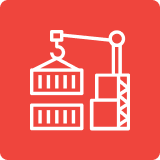According to our new “State of Yard Management: 2021 Industry Report”, which we released this week, 92% of respondents believe a yard management system (YMS) and an automated appointment management system could add value to their organization. However, only 25% of respondents are currently using a YMS, and less than half are using an automated appointment management solution.
We surveyed 375 supply chain professionals at Fortune 500 companies across Food & Beverage, Retail, Consumer Packaged Goods and Manufacturing industries to better understand the pain points they face in the yard, their processes, and what technology they’re using to help them manage throughput.
Here’s a quick glance at some of the key findings:
- 41% of retail companies have adopted a YMS platform, more than any other industry.
- Manual processes are the biggest challenge for both yard and appointment management (55% and 52%, respectively).
- 22% of respondents manage their gate processes on paper, while only 5% have taken steps to automate these processes.
- 27% of respondents do not maintain any kind of yard or appointment performance metrics.
These results confirm what we see in the field. The yard — and last mile, more broadly — is truly a black hole of information for many companies. The vast majority of companies are still heavily reliant on manual processes or outdated solutions that are disconnected from their other systems. What this means is that these companies are missing out on the proven ROI of yard management systems for companies of all sizes.
And while responses across all industries highlighted the fact that paper-based move sheets and radio communications simply can’t maintain the pace required in today’s yards, we did uncover certain yard needs unique to various industries.
F&B yards, for instance, had a higher level of YMS use (26%), which is likely due to the risk of loss of perishable commodities. I talked with one F&B supplier that wanted to install a YMS after they lost a reefer load of bacon. Sometimes it takes an expensive lesson like that to highlight the need for visibility in the yard.
Respondents from CPG and Retail, meanwhile, indicated that they are awakening to the costs associated with inefficient practices that can lead to lost products in the yard. One retailer recently told me that on a recent shipment, one trailer had been emptied but there was a load of high-dollar athletic footwear that was left out sitting in the yard. Imagine a truckload of PPE getting lost in the yard early on in the pandemic! When that happens, you’re not only disappointing your customers, but you’re also losing significant revenue from those products.
Why Do Companies Use a YMS?
At most yards, managers tell me they’re swamped. But managers don’t always know how long it takes to find a trailer, move it to the right spot and get that information into the system. Often, spotters have to park and go into the warehouse to record their moves and receive their next tasks. Perhaps drivers are spending a lot more time in idle status, which managers have no visibility into. There’s a lot of wasted effort, and it’s practically impossible to target areas for improvement without key performance metrics at hand.
The 25% of survey respondents that have adopted a YMS understand the value that such a platform delivers, including:
- Enhanced inventory management
- Reduced labor costs
- Lower expenses
- Automating time-consuming manual processes
- Improved dock and trailer utilization
- Carrier management
One of the most strategic benefits of a YMS lies in creating and managing metrics to develop key performance indicators for yard operations. Our survey found that only about half of respondents capture appointment-related metrics; 9% captured yard metrics; and only 16% captured both.
Of course, improvement in the yard can only happen if you are tracking your baseline performance. Managers who use a YMS are armed with the data to pinpoint problems; can identify areas of improvement across their operations; and can quantify the cost of poor visibility that results in detention costs and equipment dwell time. With a YMS, you can also monitor carrier performance and develop deeper relationships that deliver better service.
Next-Generation YMS
While traditional homegrown and legacy YMSs offer some minimal visibility within the physical borders of the yard, they don’t connect to other critical systems, nor do they offer analytic, predictive or automated capabilities. And while technology has increasingly been coming to the yard (e.g., IoT devices, sensors, autonomous trucking), it’s an area that has still been highly disconnected from what’s happening in real-time with shipments in transit.
Now, a new generation of yard management solutions are coming to market that combine robust integrations with TMS, WMS and real-time transportation visibility platforms (RTTVPs) to provide a full picture of operations and serve as the single source of truth for centralized analysis and monitoring. Like FourKites’ Dynamic Yard, these solutions provide comprehensive reporting and metrics to ensure every site is performing optimally, from the smallest up to multiple enterprise locations.
With COVID-19 disruptions only exacerbating the management of congested yards and gatehouses, many companies are now realizing the need for better last-mile visibility into inbound loads to manage the flow of traffic through their distribution sites. This new generation of YMS is poised to deliver, with average implementations improving workforce efficiency by 25-30%, increasing dock throughput by 20-40%, and reducing detention costs by 40-80%.
. . . . . . . . . . . . . . . . .
FourKites’ “State of Yard Management: 2021 Industry Report” reinforces the notion of the yard as a black hole of visibility. The value of a YMS has been well-documented, and shippers are increasingly realizing that the yard can be a true competitive differentiator, rather than a cost center.
To learn more about pain points, trends and technology usage in the yard, in addition to a deep-dive into the value a YMS can bring, be sure to download our guide or contact us now.






